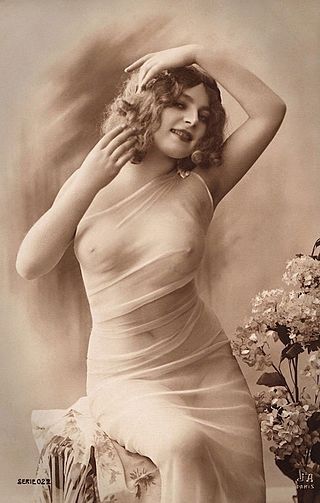
Erotica is literature or art that deals substantively with subject matter that is erotic, sexually stimulating or sexually arousing. Some critics regard pornography as a type of erotica, but many consider it to be different. Erotic art may use any artistic form to depict erotic content, including painting, sculpture, drama, film or music. Erotic literature and erotic photography have become genres in their own right. Erotica also exists in a number of subgenres including gay, lesbian, women's, bondage, monster and tentacle erotica.
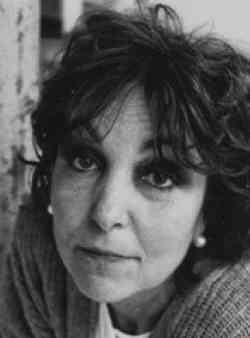
Dame Maria Paula Figueiroa Rego was a Portuguese-British visual artist, widely considered the pre-eminent woman artist of the late 20th and early 21st century, known particularly for her paintings and prints based on storybooks. Rego's style evolved from abstract towards representational, and she favoured pastels over oils for much of her career. Her work often reflects feminism, coloured by folk-themes from her native Portugal.

Erotic art is a broad field of the visual arts that includes any artistic work intended to evoke arousal. It usually depicts human nudity or sexual activity, and has included works in various visual mediums, including drawings, engravings, films, paintings, photographs, and sculptures. Some of the earliest known works of art include erotic themes, which have recurred with varying prominence in different societies throughout history. However, it has also been widely considered taboo, with either social norms or laws restricting its creation, distribution, and possession. This is particularly the case when it is deemed pornographic, immoral, or obscene.

Alice Neel was an American visual artist, who was known for her portraits depicting friends, family, lovers, poets, artists, and strangers. Her career spanned from the 1920s to 1980s. Her paintings have an expressionistic use of line and color, psychological acumen, and emotional intensity. She pursued a career as a figurative painter during a period when abstraction was favored, and she did not begin to gain critical praise for her work until the 1960s.

Carolee Schneemann was an American visual experimental artist, known for her multi-media works on the body, narrative, sexuality and gender. She received a B.A. in poetry and philosophy from Bard College and a Master of Fine Arts from the University of Illinois. Originally a painter in the Abstract Expressionist tradition, Schneeman was uninterested in the masculine heroism of New York painters of the time and turned to performance-based work, primarily characterized by research into visual traditions, taboos, and the body of the individual in relation to social bodies. Although renowned for her work in performance and other media, Schneemann began her career as a painter, saying: "I'm a painter. I'm still a painter and I will die a painter. Everything that I have developed has to do with extending visual principles off the canvas." Her works have been shown at the Los Angeles Museum of Contemporary Art, the Museum of Modern Art in New York, the London National Film Theatre, and many other venues.
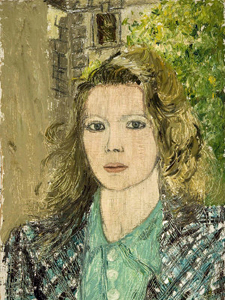
Sylvia Sleigh was a Welsh-born naturalised American realist painter who lived and worked in New York City. She is known for her role in the feminist art movement and especially for reversing traditional gender roles in her paintings of nude men, often using conventional female poses from historical paintings by male artists like Diego Vélazquez, Titian, and Jean-Auguste-Dominique Ingres. Her most well-known subjects were art critics, feminist artists, and her husband, Lawrence Alloway.

Feminist art is a category of art associated with the feminist movement of the late 1960s and 1970s. Feminist art highlights the societal and political differences women experience in their lives. The goal of this art form is to bring a positive and understanding change to the world, leading to equality or liberation. Media used range from traditional art forms, such as painting, to more unorthodox methods such as performance art, conceptual art, body art, craftivism, video, film, and fiber art. Feminist art has served as an innovative driving force toward expanding the definition of art by incorporating new media and a new perspective.
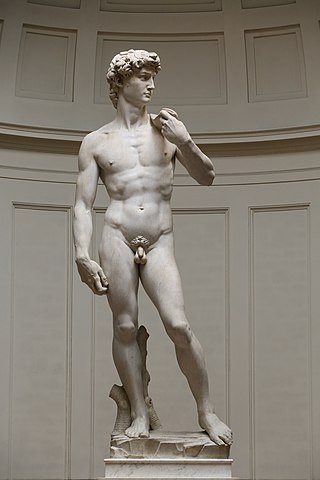
The nude, as a form of visual art that focuses on the unclothed human figure, is an enduring tradition in Western art. It was a preoccupation of Ancient Greek art, and after a semi-dormant period in the Middle Ages returned to a central position with the Renaissance. Unclothed figures often also play a part in other types of art, such as history painting, including allegorical and religious art, portraiture, or the decorative arts. From prehistory to the earliest civilizations, nude female figures were generally understood to be symbols of fertility or well-being.

Arpita Singh is an Indian artist. Known to be a figurative artist and a modernist, her canvases have both a story line and a carnival of images arranged in a curiously subversive manner. Her artistic approach can be described as an expedition without destination. Her work reflects her background. She brings her inner vision of emotions to the art inspired by her own background and what she sees around the society that mainly affects women. Her works also include traditional Indian art forms and aesthetics, like miniaturist painting and different forms of folk art, employing them in her work regularly.
Anita Slavin Arkin Steckel was an American feminist artist known for paintings and photomontages with sexual imagery. She was also the founder of the arts organization "The Fight Censorship Group", whose other members included Hannah Wilke, Louise Bourgeois, Judith Bernstein, Martha Edelheit, Eunice Golden, Juanita McNeely, Barbara Nessim, Anne Sharpe and Joan Semmel.

Joan Semmel is an American feminist painter, professor, and writer. She is best known for her large-scale naturalistic nude self portraits as seen from her perspective looking down.
Martha Nilsson Edelheit, also known as Martha Ross Edelheit, is an American-born artist currently living in Sweden. She is known for her feminist art of the 1960s and 1970s, which focuses on erotic nudes.

In feminist theory, the male gaze is the act of depicting women and the world in the visual arts and in literature from a masculine, heterosexual perspective that presents and represents women as sexual objects for the pleasure of the heterosexual male viewer. In the visual and aesthetic presentations of narrative cinema, the male gaze has three perspectives: that of the man behind the camera, that of the male characters within the film's cinematic representations; and that of the spectator gazing at the image.
Eunice Golden is an American feminist painter from New York City, known for exploring sexuality using the male nude. Her work has been shown at the Whitney Museum of American Art, Brooklyn Museum, Bronx Museum of the Arts, Westbeth Gallery, and SOHO20 Gallery.

Jacqueline Morreau was an American artist.
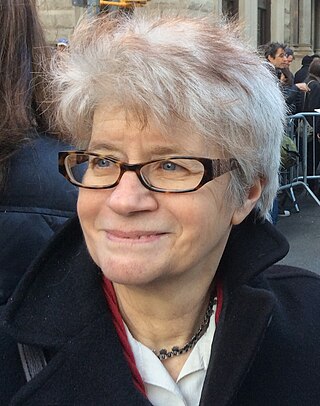
Marjorie Kramer is a figurative painter of al fresco landscapes and feminist self-portraits.
Lynda Nead is a British curator and art historian. She is currently the Pevsner Chair of the History of Art at Birkbeck, University of London. Nead's work studies British art, media, culture and often focuses on gender. Nead is a fellow of the British Academy, the Royal Historical Society and of the Academia Europaea.

Zainab Fasiki is a Moroccan graphic artist, activist for women's rights and mechanical engineer by training. She became internationally known after 2019, following her graphic novel Hshouma, corps et sexualité au Maroc which was translated from French into Moroccan Arabic, Spanish, Galician and Italian.
Clarity Haynes is a queer feminist American artist and writer. She currently lives and works in New York, NY. Haynes is best known for her unconventional painted portraits of torsos, focusing on queer, trans, cis female and nonbinary bodies. She is a former member of the tART Collective and the Corpus VI Collective.
The Untitled Space gallery is an art gallery in the Tribeca neighborhood of New York City founded by curator, photographer, magazine editor, and multidisciplinary artist Indira Cesarine in 2015. It exhibits the work of contemporary artists working in media including painting, sculpture, photography, video, printmaking, mixed media, and performance art.















